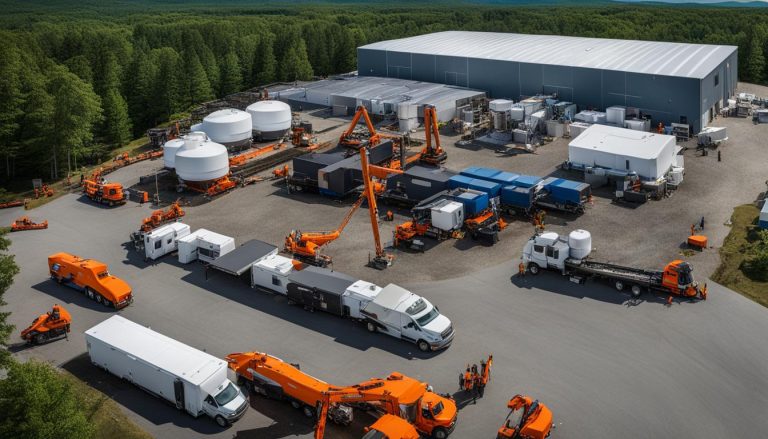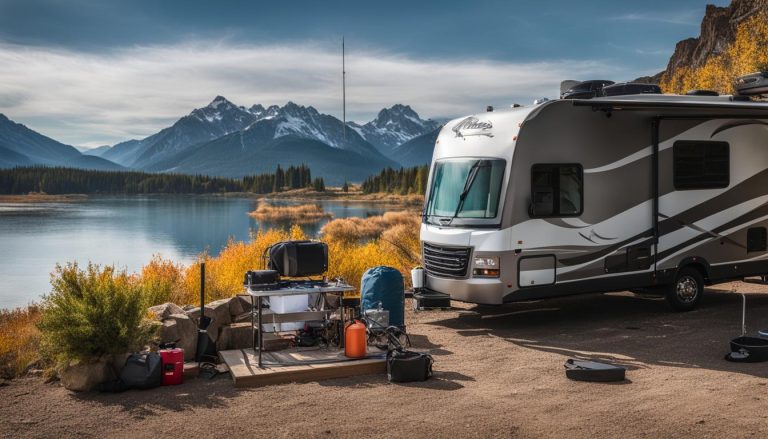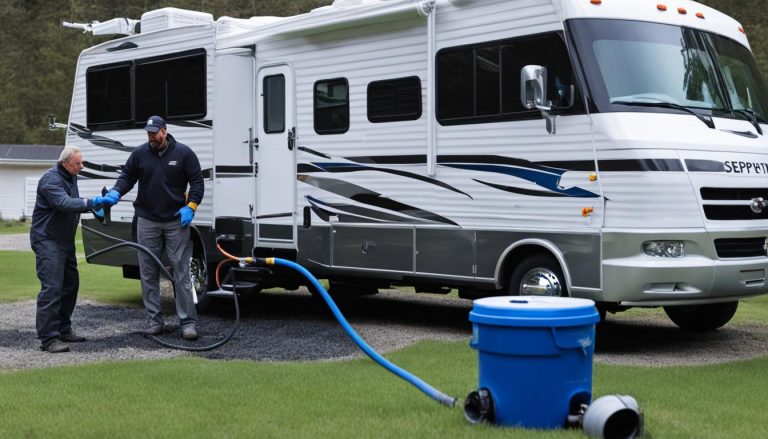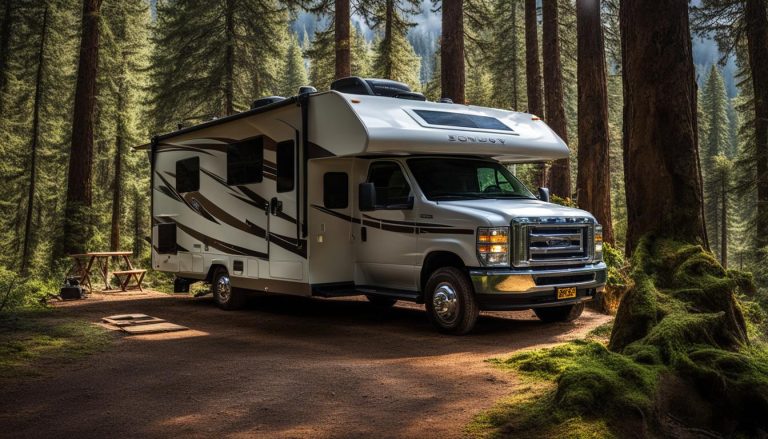Winterize Your RV: How to Insulate for Cozy Living
gorvlifestyle.com and its partners may earn a commission if you purchase a product through one of our links
In order to enjoy comfortable winter living in your RV, it is important to properly insulate it. RVs are typically not well-insulated from the factory, but there are several steps you can take to improve insulation and keep the cold air out. Adding a skirt to your RV can be an effective way to prevent cold air from getting under the rig. Additionally, insulating the windows with shrink wrap kits or upgrading to double-paned windows can help to retain heat. It is also essential to check and replace any worn caulk, seals, or weather stripping that may be allowing cold drafts. Lastly, covering skylights and vents can help to retain warm air inside the RV. By following these insulation tips, you can create a cozy and comfortable living space in your RV during the winter months.
Key Takeaways:
- Adding a skirt to your RV can prevent cold air from getting under the rig.
- Insulating windows with shrink wrap kits or upgrading to double-paned windows retains heat.
- Check and replace worn caulk, seals, or weather stripping to prevent cold drafts.
- Covering skylights and vents helps retain warm air inside the RV.
- Proper insulation creates a cozy and comfortable living space in the winter.
Insulating the Water System and Pipes
Freezing temperatures can be detrimental to the water system and pipes in your RV. Protecting these components by insulating them properly is a crucial step in preparing for winter. By taking the following measures, you can prevent damage and ensure that your water system remains functional throughout the colder months.
1. Insulate Pipes and Vents
One of the most effective ways to protect your water system from freezing is by insulating the pipes and vents. This can be done using foam insulation or heat tape. Wrap the insulation or tape around the exposed sections of the pipes and vents to maintain a stable temperature and prevent freezing. This insulation acts as a barrier against the cold, preserving the water flow and preventing any potential damage.
2. Remove Water and Sanitize
Before the winter season begins, it’s important to drain all water from your RV’s system to prevent freezing and subsequent damage. Start by emptying the fresh water tank, followed by draining the gray and black tanks. Once the tanks are empty, sanitize the water system to eliminate any bacteria or algae that might have accumulated. This step ensures that your water system remains clean and free from contaminants during winter.
3. Add Antifreeze to Tanks
Another critical step in protecting your water system is adding antifreeze to the gray and black tanks. Antifreeze prevents the wastewater in these tanks from freezing and causing pipe bursts. Ensure that you use RV-specific antifreeze, following the manufacturer’s instructions for proper usage and concentration. This simple yet effective measure can save you from potential costly repairs or replacements.
4. Inspect and Maintain
Regularly inspect your RV’s water system for any signs of wear, leaks, or damage. Replace or repair any worn-out seals, gaskets, or pipes to maintain the integrity of the system. Additionally, check for any loose connections and tighten them if necessary. By taking the time to maintain and inspect your water system, you can catch any issues early on and address them before they become significant problems.
| Insulation Tips | Description |
|---|---|
| Insulate pipes and vents | Use foam insulation or heat tape to wrap pipes and vents to prevent freezing and damage. |
| Remove water and sanitize | Drain and sanitize the water system before winter to prevent contamination and freezing. |
| Add antifreeze to tanks | Prevent wastewater from freezing in gray and black tanks by using RV-specific antifreeze. |
| Inspect and maintain | Regularly check for wear, leaks, and damage, and repair or replace components as needed. |
By insulating and winterizing your RV’s water system and pipes, you can avoid costly repairs and ensure a trouble-free winter camping experience. Taking these precautions not only protects your investment but also provides peace of mind, allowing you to enjoy your winter adventures to the fullest.
Keeping Warm Inside the RV
Keeping the interior of your RV warm and comfortable is essential for winter living. To ensure a cozy and enjoyable space during cold weather RV living, consider the following tips:
- Utilize Space Heaters: In addition to your RV’s heating system, using space heaters can provide extra warmth, especially during extremely cold temperatures. They are great for supplementing the heating system and creating a cozy atmosphere inside your RV.
- Insulate Windows and Doors: Preventing heat loss is crucial for maintaining warmth inside your RV. Insulate windows and doors using weather stripping and insulation tapes. Thermal curtains can also help in reducing drafts and retaining heat.
-
Quote:
“I always use space heaters alongside my RV’s heating system, and it makes a significant difference in keeping the interior warm during cold weather RV living.” – RV enthusiast, Sarah Thompson
- Use Rugs and Carpets: Place rugs or carpets on the floor to provide an extra layer of insulation. They can help in keeping your RV cozy and preventing cold floors from affecting overall comfort.
- Install Dehumidifiers: Cold weather can lead to excess moisture inside your RV, which can promote mold growth. Using dehumidifiers can help maintain a dry environment and prevent mold-related issues.
-
Quote:
“Insulating windows and using rugs really made a difference in keeping warm inside our RV during a winter camping trip. It created a cozy atmosphere and helped us stay comfortable throughout our stay.” – RV traveler, Mark Davis
By following these tips, you can create a warm and comfortable living space inside your RV, even in the coldest winter months.
Protection from the Exterior Elements
When preparing your RV for winter, it’s crucial to protect the exterior from the harsh elements. This will help prevent potential damage and ensure your RV stays in top shape. Here are some important steps to include in your RV winterization checklist:
Inspect and Reseal the Roof
Regularly inspecting and resealing the roof of your RV is essential to prevent leaks and water damage. Over time, the sealant can deteriorate, leading to potential issues. By checking for any cracks or gaps in the roof’s sealant and applying a fresh layer, you can safeguard your RV against water intrusion.
Add an RV Skirt
An RV skirt is a protective barrier that can shield the bottom of your RV from the cold weather. It can also help raise the temperature underneath, preventing freezing of pipes and tanks. By installing an RV skirt, you provide an extra layer of insulation, keeping the interior warmer and reducing heat loss.
Use Heat Tape
Exposed pipes are vulnerable to freezing temperatures, which can lead to costly repairs. By insulating your pipes with heat tape, you can prevent them from freezing and ensure a continuous flow of water. Heat tape is easy to apply and can be a lifesaver during winter camping trips.
Protect Your Tires
Tires are often overlooked when winterizing an RV, but they play a crucial role in your safety on the road. Make sure your tires have proper tread and are not outdated. Cold temperatures can cause tire pressure to drop, so regularly check and adjust the tire pressure to the manufacturer’s specifications. By taking care of your tires, you can prevent accidents and enjoy a smooth journey.
By following these steps and including them in your winterization checklist, you can protect your RV from the winter elements and ensure a safe and enjoyable camping experience.
| Risk | Prevention |
|---|---|
| Water damage from leaks | Regularly inspect and reseal the roof |
| Freezing of pipes and tanks | Add an RV skirt and use heat tape on exposed pipes |
| Tire damage | Ensure tires have proper tread and correct tire pressure |
Protecting your RV from the winter elements is essential to maintain its longevity and functionality. By implementing these protective measures, you can winterize your RV effectively and enjoy worry-free adventures during the colder months.
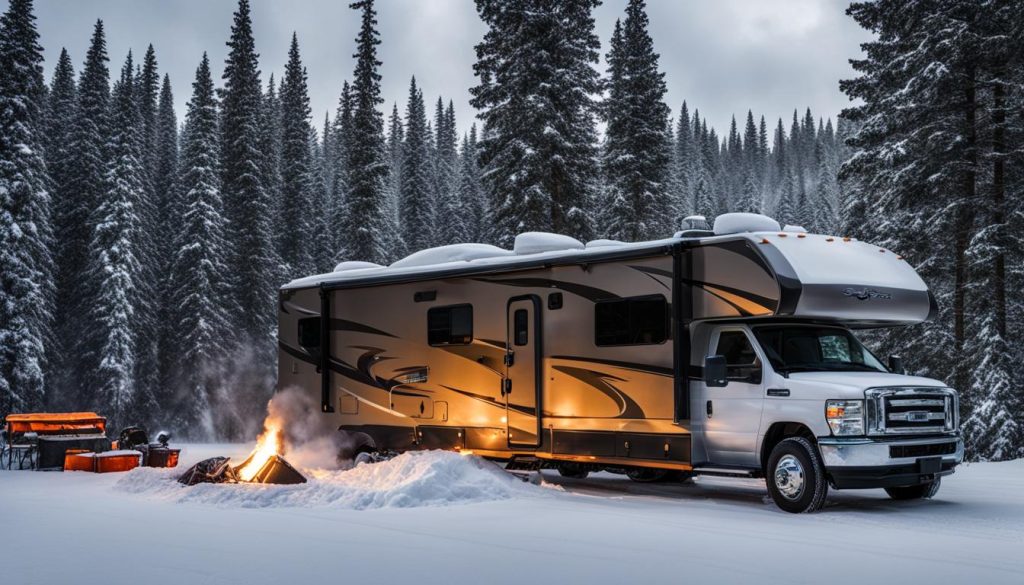
Benefits of Winter RV Living
While winter RV living may present some challenges, there are many benefits to embracing this lifestyle. One of the main advantages is the cost-effectiveness it offers. Living in an RV during the winter can significantly reduce living expenses compared to traditional housing. You’ll save on rent or mortgage payments, utility bills, and property taxes, allowing you to allocate your funds to other experiences and adventures.
Another perk of winter RV living is the flexibility it provides. Unlike being tied down to one location, you have the freedom to travel and explore remote destinations. Whether it’s chasing snow-capped mountains or experiencing the tranquility of secluded campsites, living in an RV allows you to immerse yourself in nature and connect with the great outdoors. You can wake up to breathtaking views, roast marshmallows by the campfire, and create unforgettable memories.
Winter RV living can also be a source of passive income. If you decide to travel during the warmer months, you can rent out your RV to other adventurers, enabling you to earn extra money while your vehicle is not in use. This additional income can help offset maintenance costs and make your winter RV lifestyle even more affordable.
Embracing the minimalist lifestyle that comes with RV living can be hugely rewarding. By prioritizing experiences over material possessions, you’ll learn to appreciate the simple joys in life. Winter RV living allows you to live more sustainably, with a smaller carbon footprint, and encourages you to be resourceful and creative with your space. The freedom, cost savings, and connection with nature that come with winter RV living can truly enrich your life.
FAQ
How can I insulate my RV for winter living?
To insulate your RV, you can add a skirt to prevent cold air from getting underneath, insulate the windows with shrink wrap kits or upgrade to double-paned windows, check and replace any worn caulk, seals, or weather stripping that may be allowing drafts, and cover skylights and vents to retain warm air inside.
How do I insulate the water system in my RV for winter?
To insulate the water system, you can use foam insulation or heat tape to wrap the pipes and vents. It’s also important to drain and sanitize the water system before winter, and add antifreeze to the grey and black tanks to prevent freezing and pipe bursts.
What can I do to keep the interior of my RV warm during winter?
To keep the interior warm, you can use space heaters in addition to the RV’s heating system, insulate windows and doors with thermal curtains and rugs, and use dehumidifiers to keep the RV dry and prevent mold growth.
How can I protect the exterior of my RV from winter weather?
To protect the exterior, regularly inspect and reseal the roof to prevent leaks, add an RV skirt to protect the bottom and raise the temperature underneath, use heat tape to prevent freezing of exposed pipes, and ensure tires have proper tread and are not outdated.
What are the benefits of winter RV living?
Winter RV living offers cost-effectiveness compared to traditional housing, flexibility to travel and explore remote locations, the opportunity for passive income through renting out the RV, and the chance to embrace a minimalist lifestyle and prioritize experiences.

